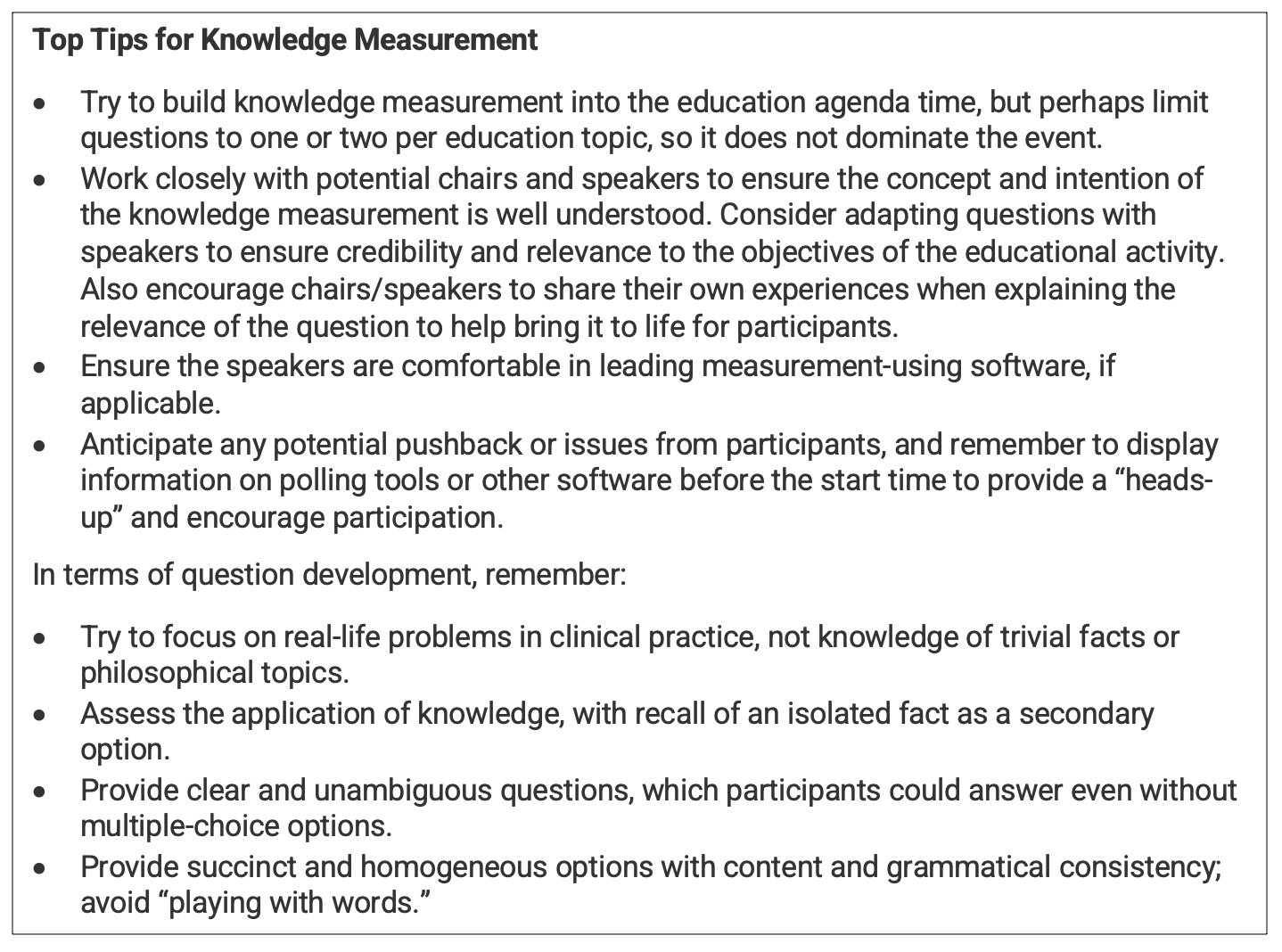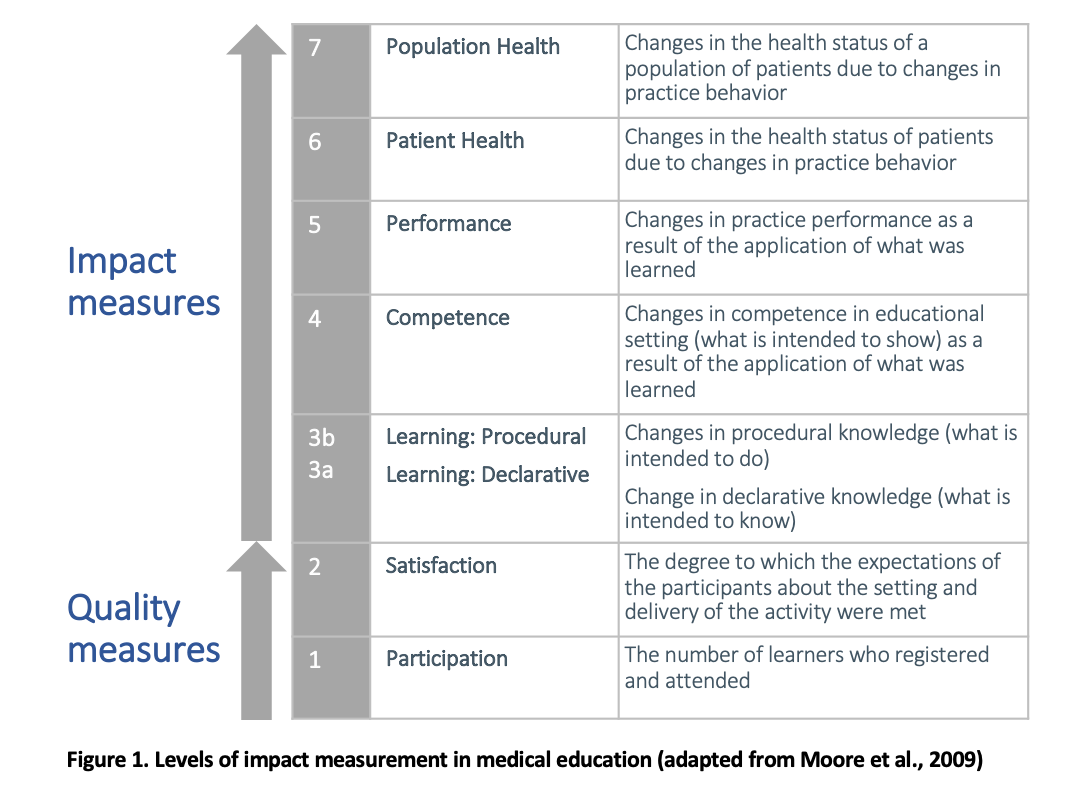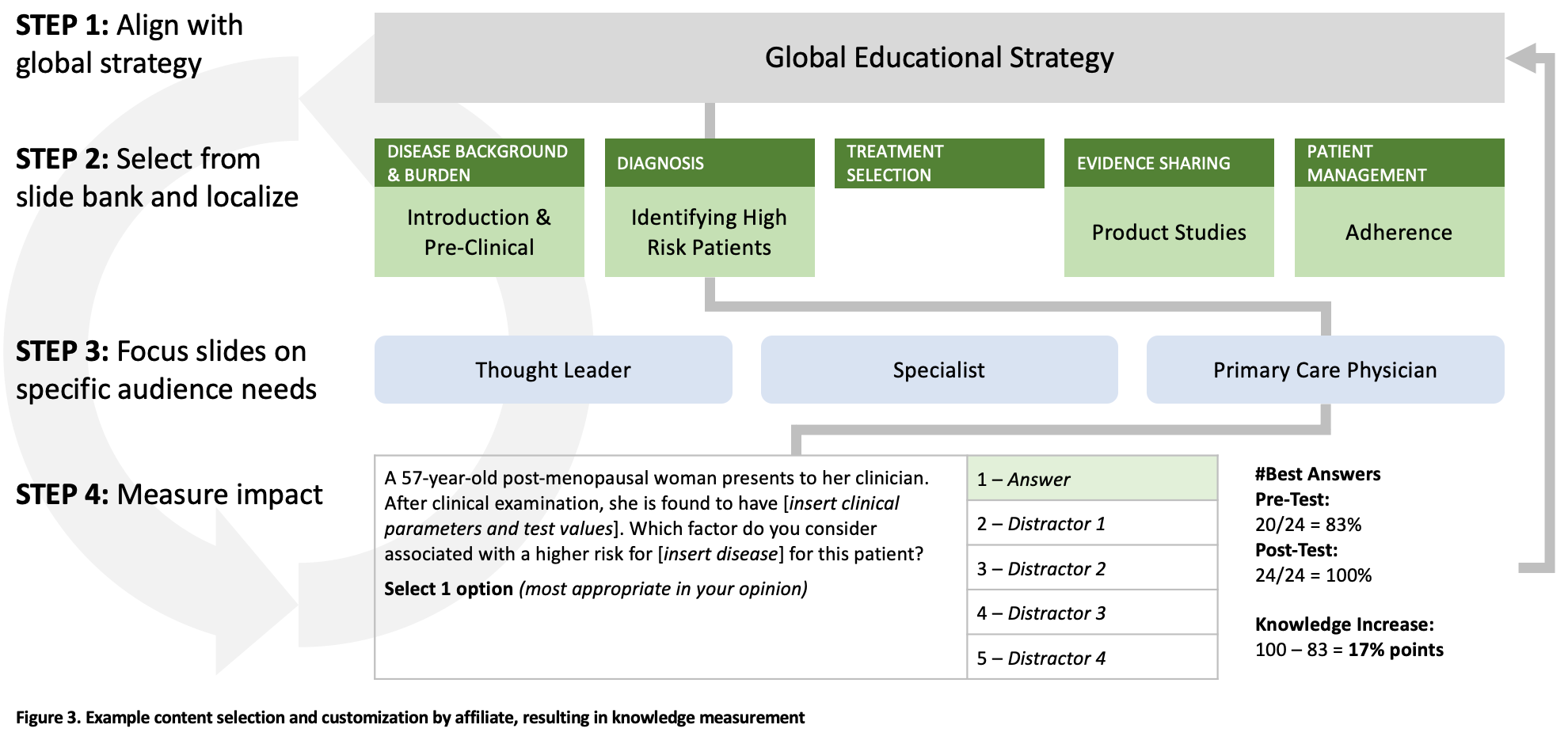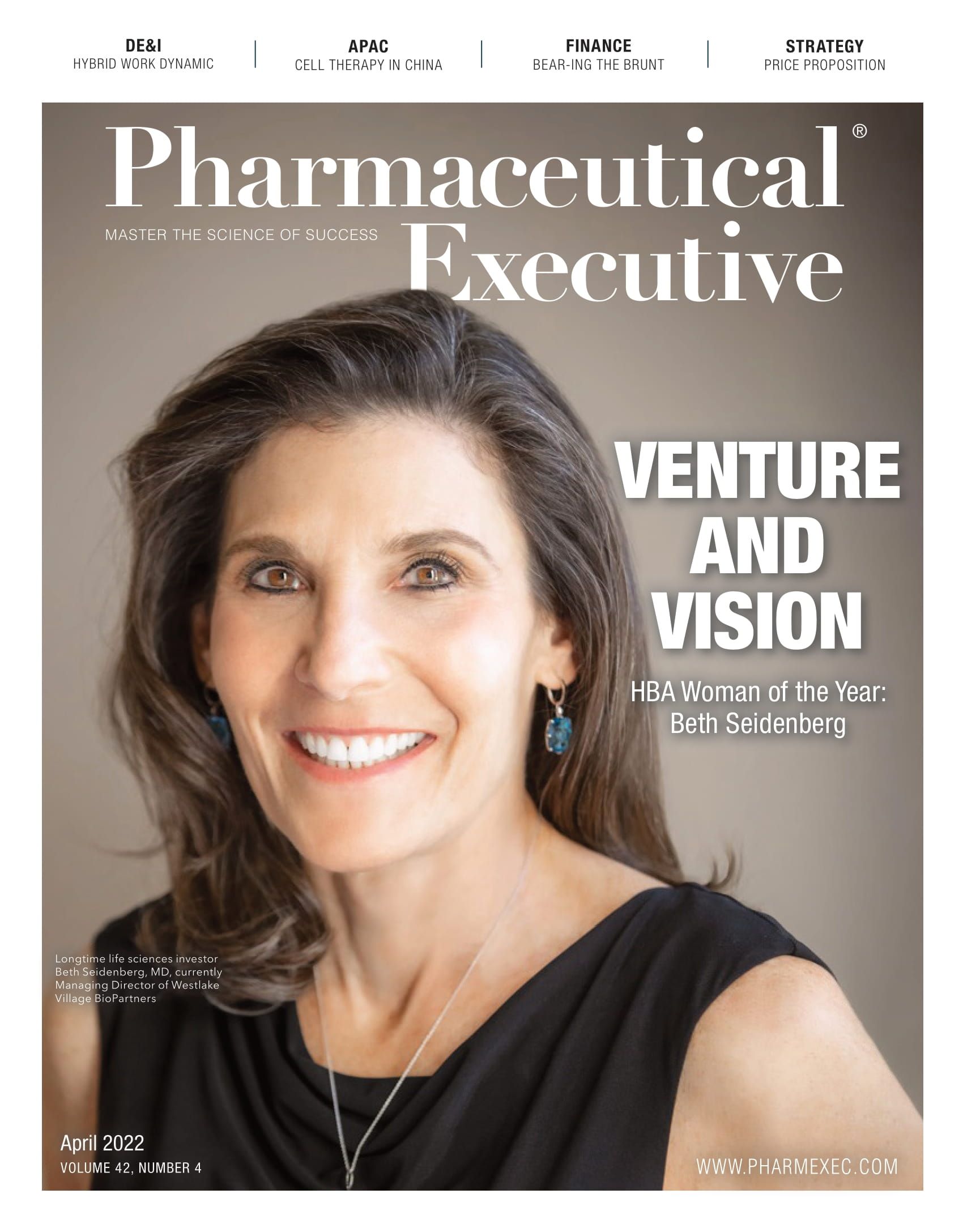No Half Measures: How Medical Affairs Can Maximize and Measure Value
Education and knowledge transfer must be prioritized for industry to see sizable improvement in medical affairs.
The healthcare environment is undergoing rapid and substantial change, in part due to an explosion of innovation in science and technology. Meanwhile, the pharmaceutical industry—not known for its agility—is having to adapt, and fast.
While much of the focus has been on how pharma needs to evolve its R&D approach, there is perhaps no area requiring greater evolution than medical affairs. While it has always been an essential function, its remit is expanding and changing beyond recognition, arguably making it the “third strategic pillar” of pharma alongside R&D and commercial.
In particular, the ever-growing importance of value-adding medical education has put medical affairs in the spotlight. Medical affairs teams are key in supporting a translation of clinical evidence into clinical practice for diverse groups of healthcare professionals by providing value-adding educational initiatives in partnership with scientific experts and sources of authority. However, providing valuable education is not enough to encourage improvements in clinical practice. Measurement of knowledge transfer is of utmost importance to ensure impact and allow continuous improvement of education content and delivery.
Value pull-through: From dilution to solution

Ata global level, many pharma companies are adapting, evolving to build the necessary infrastructure to enable their medical affairs teams to engage as credible partners in supporting professional development of healthcare stakeholders. With a common vision to improve patient outcomes, excellent medical education focuses on clinical care gaps and the educational needs of healthcare professionals.
For any medical education strategy to generate consistent and valuable impact, educational initiatives and measurement of knowledge transfer require global support and coordination. When providing content support for educational initiatives, a balancing act is required in offering value-adding content targeting globally identified clinical care gaps, while ensuring adaptability to local educational needs. The balancing act continues for the measurement of knowledge transfer. Implementation of a global measurement framework allows for consistent understanding of value yet requires adaptability locally. Given all the elements involved, there is great risk of dilution of value from the global to the local level.
Dilution of value from a global medical education strategy to the local level can cause a significant duplication of effort and waste of resources. More importantly, dilution of value is likely to result in inconsistent impact on knowledge and competence of healthcare professionals, in turn resulting in inconsistent improvements in clinical practice and patient outcomes.
So how can value pull-through to the local level be maximized?
Let’s look at a recent example. With the aim to address key clinical care gaps within a new disease area for the company and to enable effective value pull-through to the local level, the medical education team at Eli Lilly provide a core resource—an educational slide bank containing content related to disease state, diagnostic approaches, treatment options, latest clinical evidence, and patient management. The educational content is based on scientific guidelines and recommendations from external sources of authority. It is co-created and validated with external scientific experts to target top educational needs for healthcare professionals. This educational slide bank provides the foundation for any company-led educational activity within the disease area across regions. Following this approach, the value created through focus on educational needs across the care pathway and validation with external experts is preserved when pulled through to the local level.
In this example, high value pull-through was achieved via:
- Ease of implementation: Global solutions should not attempt to be all things to all countries, but rather provide the educational strategy and core content that can easily be adapted and applied. Lilly’s educational slide bank provides core educational content aimed to improve patient outcomes and is segmented for different audiences based on level of scientific knowledge and interest. Crucially, the material is “live,” enabling ongoing updates as new information or new evidence becomes available.
- Value pull-through training: The rollout of the educational slide bank and the accompanying framework for measurement of knowledge transfer was supported by guidance calls led by Lilly’s global medical affairs team, a combination of live or video-recorded training, offline practical “mock” exercises, Q&As, and case studies. Training was conversational as well as instructional, with global and local teams working together to understand the best way to pull through and measure value at the local level.
- Receptiveness of local teams: An established internal governance ensured an open and consistent communication flow between Lilly’s global medical affairs and local teams in each market, enabling a constant cycle of improvement, based on affiliate feedback and learnings.
The vital importance of impact measurement in medical affairs
To demonstrate that the medical education which has reached healthcare professionals was valuable and positively affected clinical care and patient outcomes, measurement of impact is critical.
In the context of medical education, Moore’s Model (see Figure 1 below) provides an excellent framework of outcomes assessment that can aid medical affairs teams when evaluating activities for their impact on healthcare professional performance and patient outcomes.

Participation numbers and their satisfaction (levels 1 and 2) are most easily measured but do not necessarily provide value beyond understanding the quality of an educational activity. Levels 3 to 7 of Moore’s model measure the impact of an educational activity on the external environment, from healthcare professional knowledge (level 3) all the way to population health (level 7). Knowledge and competence (levels 3 and 4) in particular are essential to enable the translation of clinical evidence into clinical practice, while also being practical to implement, providing an ideal starting point for measuring the impact of medical education.
Measuring impact on higher levels of Moore’s Model (levels 5 to 7) becomes more challenging, with objective measurement and causality from the education in question increasingly difficult to establish. While self-assessment can be used beyond level 4 (competence), its subjective nature invites a high degree of bias. That is not to say that self-assessment does not have its place in impact measurement for medical education. As Stephen Loftus reflects, the medical profession should not be reduced to objective, technical competencies. Instead, these should be balanced with physicians’ values, attitudes, and ethics—which in turn lend themselves to self-assessment. Similarly, self-reported confidence on a topic—widely considered the midpoint between knowledge (level 3) and competence (level 4)—has been found to be an indicator for commitment to change.
However, neither confidence, competence, nor performance can be achieved without knowledge, which makes knowledge measurement the most essential and achievable activity to implement.
No half measures: Full-value pull-through
For Lilly’s educational slide bank, a knowledge measurement methodology was implemented to help understand the impact and value achieved with local educational activities based on the provided global content. A transfer of knowledge to participating healthcare professionals was measured by asking the same question, linked to the educational content, prior to and again after the educational activity. Where the education was successful and impactful, the anonymous, aggregated responses demonstrated an increase in knowledge.
By categorizing measurement outcomes across specific topics—such as disease background and burden, diagnosis, treatment selection, evidence sharing, management (see Figure 2 below)—consistent impact measurement can help to identify where the medical education content provided value and where a change of approach may be beneficial in the future.

To ensure consistency of metrics across a variety of educational initiatives conducted with different audiences, sample knowledge measurement questions were provided together with the global educational strategy and the slide bank content—again with the flexibility provided to adapt to local needs as well as based on input from external experts involved in the education.
In the case of the global educational slide bank, a key element of success has been the tailored and iterative nature of the approach, which optimizes local affiliate engagement (see Figure 3 below).

The open channel of communication between global and local is particularly important, allowing for alignment to and adaption of the global strategy, and enabling the affiliate to select the elements of the slide bank most applicable to the local situation and the audiences that need to be reached. By utilizing knowledge measurement as a platform for assessing impact, the team can also reflect the outcomes back into evolved iterations of the medical affairs strategy and materials.
The outcomes of Eli Lilly’s slide bank
Lilly’s slide bank has become a powerful tool both at a global level and for markets that are able to pull through the educational strategy as well as the value-adding content co-created with external scientific experts, based on open channels of communication and clear guidance.
Highlights of the tool include:
- When pivotal study data was updated following an updated data disclosure, the medical affairs team could act with speed and agility to adapt the core slide bank resource, enabling education on up-to-date information in support of improved patient outcomes.
- Selected slides from the slide bank were utilized directly by external opinion leaders at congresses to help educate healthcare professionals; another channel to support consistent, value-adding education targeting top clinical care gaps.
- Medical education events conducted with healthcare professionals used the slide bank as a core resource. Impact measurement of one education session demonstrated a knowledge increase of participants by 17% points, from 83% prior to the education to 100% following the education.
- The slide bank was used to train the medical teams at a local country level, allowing the affiliates to then localize the slide bank for their own educational events in each country.
Measuring up: Medical affairs in transformation
For medical affairs, the time for change is now. Medical affairs teams are in the unique position to frequently partner with external scientific experts, particularly in medical education. The value created through those interactions is reflected in the medical education strategy and exceptional learning engagements targeting real-life clinical care gaps and educational needs. The pull-through of this value to the local country level ensures consistency in education and translation of clinical evidence into clinical practice.
For medical affairs, which is a cost-intensive department in any pharmaceutical company, being able to demonstrate this value is essential in the evermore restrictive battle for resource allocation. Measuring the impact achieved with medical education highlights the value of medical affairs and empowers the function to step up as the “third strategic pillar” of pharma alongside R&D and commercial.

Patrick Bubach, senior director, Global Medical Affairs Education Portfolio, Eli Lilly, Jean-Jacques Murama, associate vice president, Global Medical Affairs Education, Eli Lilly, Ailsa Budden, senior director, Global Medical Education—Oncology, Eli Lilly, and Lisa Sigl, director, Executive Insight, Healthcare Consultants

The Misinformation Maze: Navigating Public Health in the Digital Age
March 11th 2025Jennifer Butler, chief commercial officer of Pleio, discusses misinformation's threat to public health, where patients are turning for trustworthy health information, the industry's pivot to peer-to-patient strategies to educate patients, and more.
Navigating Distrust: Pharma in the Age of Social Media
February 18th 2025Ian Baer, Founder and CEO of Sooth, discusses how the growing distrust in social media will impact industry marketing strategies and the relationships between pharmaceutical companies and the patients they aim to serve. He also explains dark social, how to combat misinformation, closing the trust gap, and more.